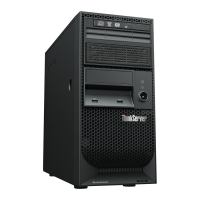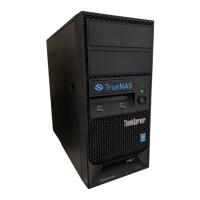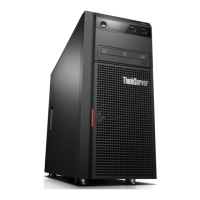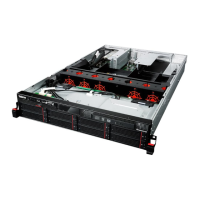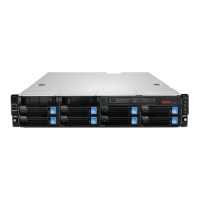• Before using the ThinkServer EasyStartup program to install an operating system, ensure that any external
storage devices and fiber channels are configured correctly.
The ThinkServer EasyStartup program main interface provides the following menus on the left pane of the
screen.
Menu item Description
Home Provide general information about the program.
Compatibility notes Provide information about the operating systems and server configurations
supported by the version of the program you are using.
User Guide Provide information about the features of the program and instructions on how to
use the program
Hardware list Display a list of hardware devices detected by the program.
Configure RAID Instruct you to configure RAID or view the current RAID configuration and make
changes if needed
Install operating system Display a series of choices and prompts to collect information required for
operating system installation, prepare the hard disk drive for installation, and then
initiate the installation process using your operating system installation disc.
About Provide the version information and legal notices.
Configuring RAID
This topic provides information about RAID and how to configure RAID for your server.
• “About RAID” on page 33
• “RAID for your server” on page 34
• “Configuring onboard SATA software RAID” on page 35
• “Configuring advanced SATA or SAS hardware RAID” on page 37
About RAID
RAID, an acronym for Redundant Array of Independent Disks, is a technology that provides increased
storage functions and reliability through redundancy. This is achieved by combining multiple hard disk drives
into a logical unit, where data is distributed across the drives in one of several ways called RAID levels.
When a group of independent physical hard disk drives are set up to use RAID technology, they are in a RAID
array. This array distributes data across multiple hard disk drives, but the array appears to the host server as
one single storage unit. Creating and using RAID arrays provides high performance, such as the expedited I/
O performance, because several drives can be accessed simultaneously.
RAID drive groups also improve data storage reliability and fault tolerance compared with single-drive
storage systems. Data loss resulting from a drive failure can be prevented by reconstructing missing data
from the remaining drives.
The following list describes some of the most commonly used RAID levels:
• RAID 0: block-level striping without parity or mirroring
Simple stripe sets are normally referred to as RAID 0. RAID 0 uses striping to provide high data
throughput, especially for large files in an environment that does not require fault tolerance. RAID 0 has no
redundancy and it provides improved performance and additional storage without fault tolerance. Any
Chapter 4. Configuring the server 33

